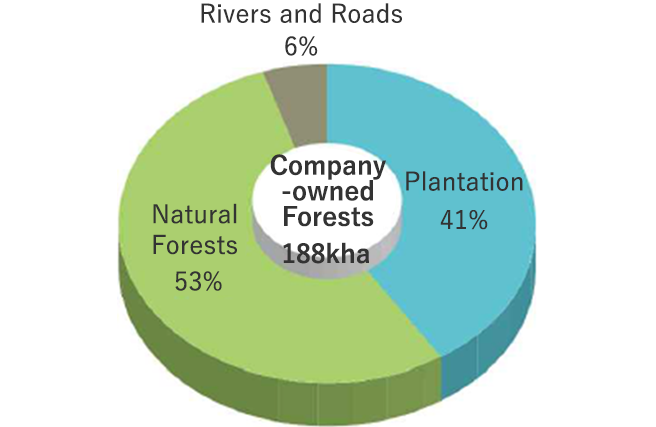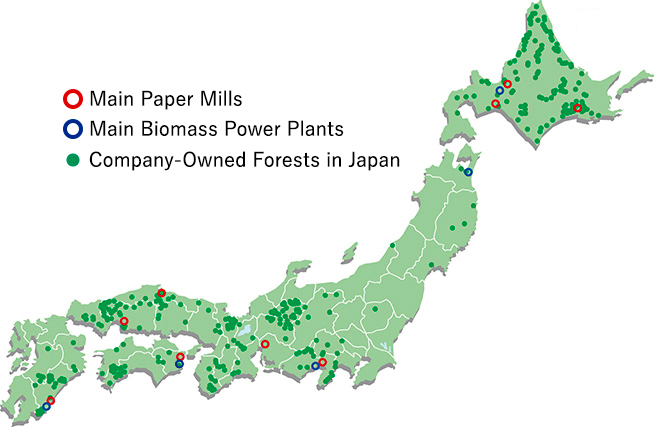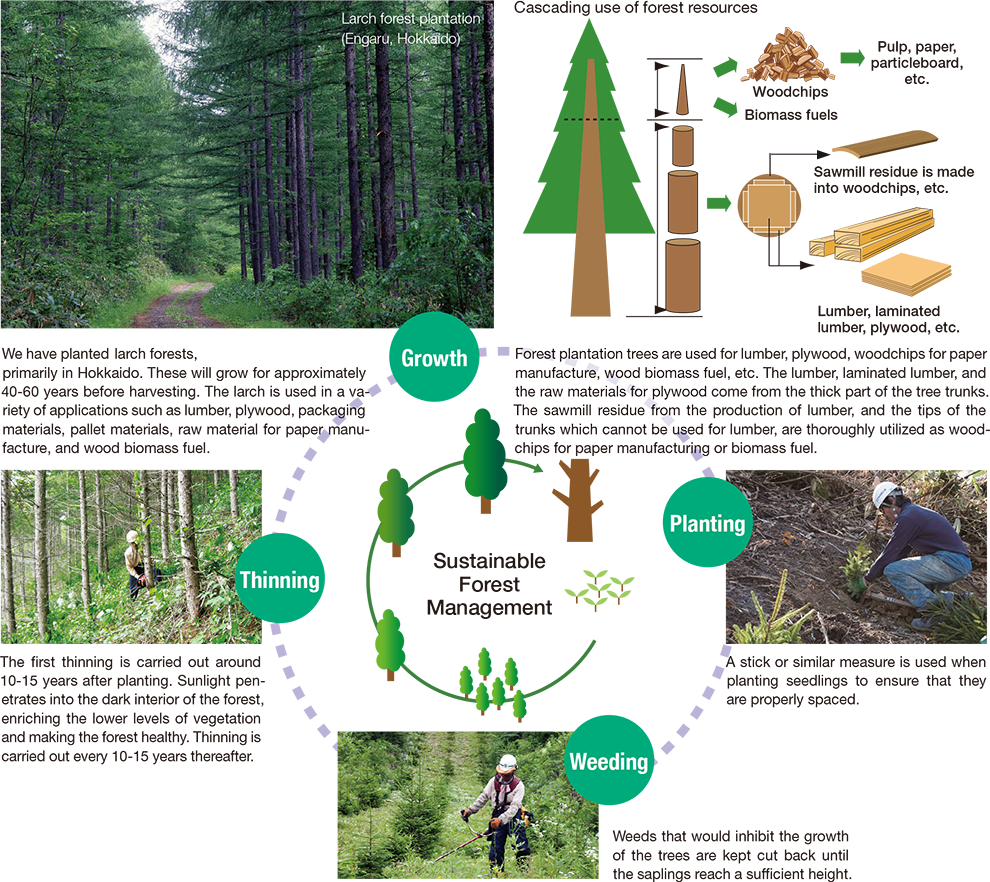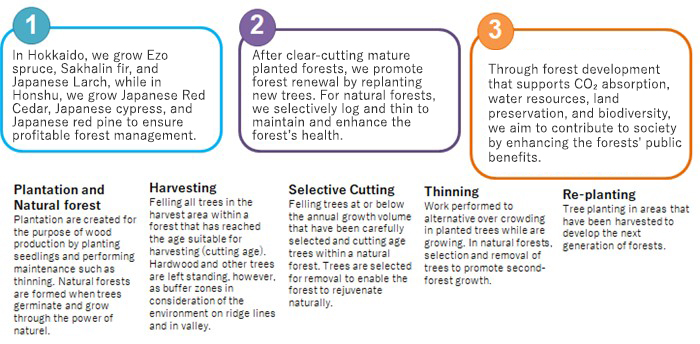
We own and manage about 650 forest sites across Japan, from Hokkaido to Kyushu, covering a total area of about 188k hectares. Of these, around 76k hectares are dedicated to planted forests, representing 40% of our total forest area. In Hokkaido, we plant species such as Sakhalin fir and larch, while in Honshu and further south, we grow cedar, Japanese cypress, and other native species. With an average tree age of 60 years, many of these forests are nearing the ideal time for harvesting.
The Oji Group practices sustainable forest management by harvesting mature trees and replanting new ones to rejuvenate the forests. We also carry out essential maintenance tasks, such as thinning, to promote healthy growth and ensure that future generations benefit from these resources.




The SGEC forest certification, operated by the Sustainable Green Ecosystem Council (SGEC)*1, is a unique certification system developed in Japan*2. In December 2003, the Oji Group took its first steps in obtaining SGEC certification, starting with the Kamiinako Forest in Shizuoka Prefecture. To date, we have expanded our SGEC-certified forests to 329 company-owned sites across Japan, covering a total of 173k hectares—making us the private company with the largest certified forest area in the country.
In 2016, SGEC entered into a mutual recognition agreement with the international organization PEFC*3, allowing it to be recognized as a globally accepted certification system.


Forests are a renewable and sustainable resource when managed responsibly—planting, growing, harvesting, and replanting trees. The Oji Group has long been committed to this circular approach, ensuring that no part of the harvested wood goes to waste. By fully harnessing the potential of every tree, we promote the efficient use of forest resources as a comprehensive forestry company.


In our company-owned forests in Japan, it takes around 60 years for trees to grow from seedlings to the point of final harvesting. During this time, we carry out various forest management tasks, such as planting seedlings, clearing undergrowth, thinning, and vine cutting.
Each year, we harvest and replant about 500 hectares, with most of the work done manually. Just the planting and undergrowth clearing alone requires a total of around 13,000 workers annually. To reduce the strain on our workforce, we're introducing drones to transport seedlings and testing new methods, like transitioning from bare-root seedlings to container-grown ones, and planting elite tree varieties. These trees grow faster and are expected to reduce the frequency of undergrowth clearing needed.

Elite trees are a special category of superior trees, bred by cross-pollinating the very best specimens from Japan's forests. These second-generation (or later) elite trees are carefully selected from saplings descended from first-generation superior trees. Elite trees have several remarkable characteristics:
Thanks to their fast growth, these trees offer significant advantages, such as lowering maintenance costs by reducing the need for undergrowth clearing and minimizing the risk of deer damage.
